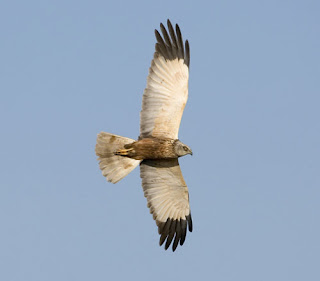Features
Balmer, D. Birding by squares [How to get involved in the new Bird Atlas project]
Vinicombe, K E. Yellow-browed and Pallas’s Warblers and Firecrest [How to separate these three ‘sprites’]
Wightman, S. London’s local patch [A look at what the Lee Valley Regional Park offers birders]
Vinicombe, K E. Life on the ocean wave [Account of a pelagic trip from Cornwall through the Bay of Biscay]
Young, S. A hood worth hugging [Bird photography: good coats for cold weather]
Better BirdingFind your own… Little Auk
On the move – with this ring
Bird names – shorthand words for waders
Atlasing – every little helps
Must see – Jack Snipe
How to … feed Wrens
Bird behaviour – gathering moss
Tip from the top – Steve Rooke
What’s on – November eventsOptical events – November guideBirding courses and workshopsNovember tide tables for Britain and Ireland
Where to watch birdsParnell, E. North-east Norfolk
Lauder, A. and Shaw, K. Loch Leven, Perth and Kinross
Kelly A G. Rogerstown Estuary, Co Dublin
Ward, M. Lymington, Hampshire
Competition
Win three Minox High Grade binoculars worth over £1,800
News and related itemsNews digest – Wallasea Island project; Severn barrage proposal; New Caledonian Crow cameras; threat to farm funding.
Fraser, M. ListCheck – updating the world view of birds. [New family: Stitchbird (Hihi) Notiomystidae. Subspecific relegation: Lesser Goldfinch Carduelis psaltria. Species confirmation: Orchard and Fuertes’ Orioles Icterus spurius and I fuertesi. Subspecific confirmation: Galapagos Dove Zenaida galapagoensis. Regional list: changes to the AOU’s North America list.]
FundraisingBirdwatch UK Bird race 2007 results
Tools of the trade Product reviews:Sigma 300mm f2.8 APO DG HSM telephoto lens
Country Innovation Venture trousers
Paramo Teide and Tacana shirts
Bino-Arm Binocular Stabilising Unit
Brochure watch
Avian Adventures
Book reviewsRare Birds Yearbook 2008 edited by Eric Hirschfeld
The Shorebird Guide by Michael O’Brien, Richard Crossley and Kevin Karlson (Christopher Helm)
Guide to Birds of Britain and Europe by Hakan Delin and Lars Svensson (Philips)
Arctic Flight; Adventures Amongst Northern Birds by James McCallum (Langford Press)
Gulls of the Americas by Steve N G Howell and Jon Dunn (Houghton Mifflin)
Accounts of recent rarities in Britain and IrelandBuxton, P. Buff-bellied boost for rarity islands [Buff-bellied Pipit (
Anthus rubescens), Porth Hellick, Scilly, 25 September 2007]
McLevy A. High jinks as ‘first’ makes swift exit [White-rumped Swift (
Apus caffer), Cresswell Pond, Northumberland, 16 September 2007]
Brown Fly in the eye for BOURC [Brown Flycatcher (
Muscicapa dauurica), Flamborough Head, Yorkshire, 3-4 October 2007]
Lauder, A. Foula’s one-day Siberian wonder [Siberian Thrush (
Zoothera sibirica), Foula, Shetland, 28 September 2007]
McCanch, N. Wader count nets unexpected booty [Booted Eagle (
Aquila pennata), Grove Ferry, Kent, 16 September 2007]
Monthly highlights summary: September 2007
Recent reportsMonthly round-ups from eight regions in Britain, and from Northern Ireland and the Republic of Ireland, September 2007, including photos of Buff-bellied Pipit (
Anthus rubescens), Buff-breasted Sandpiper (
Tryngites subruficollis), Citrine Wagtails (
Motacilla citreola), Aquatic, Blyth’s Reed and Paddyfield Warblers (
Acrocephalaus paludicola,
A dumetorum and
A agricola), Red-flanked Bluetail (
Tarsiger cyanurus), Moltoni’s Subalpine Warbler (
Sylvia cantillans moltonii), Long-tailed Skua (
Stercorarius longicaudus), Isabelline (Turkestan) Shrike (
Lanius isabellinus phoenicuroides), Lanceolated Warbler (
Locustella lanceolata), Swainson’s Thrush (
Catharus ustulatus) and Wilson’s Phalarope (
Phalaropus tricolor).
Highlights summary for the Western Palearctic in September 2007, including photos of Buff-bellied Pipit (
Anthus rubescens) in France, Long-tailed Skua (
Stercorarius longicaudus) in Sweden, Booted Warbler (
Hippolais caligata) in The Netherlands, White-throated Robin (
Irania gutturalis) in Belgium and Baird’s Sandpiper (
Calidris bairdii) in Denmark.
ISSN 0967-1870


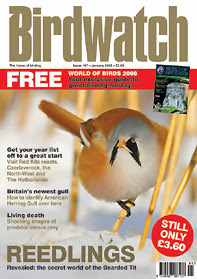
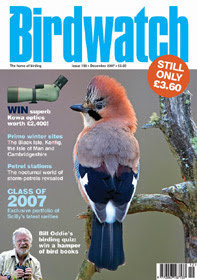
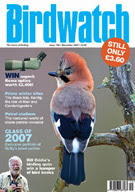
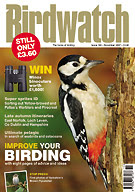




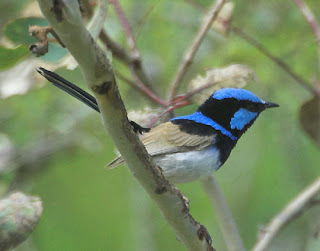
 A new report from UK conservation bodies suggests that many UK wintering bird population declines may be due to climate change.
A new report from UK conservation bodies suggests that many UK wintering bird population declines may be due to climate change. 




